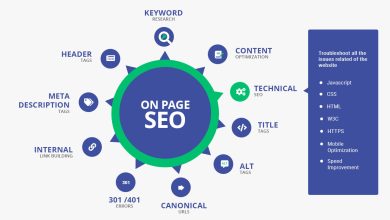7 Guidelines For Typesetting And Book Layout Designs

Here, in this article you will get to know the 7 guidelines for typesetting and book cover designs. Most authors are aware that having a fantastic cover is essential when self-publishing a book. It draws in a potential reader and teases them about what to expect from your story in both subtle and overt ways. Unfortunately, the inside pages—often referred to as the book’s “interior”—don’t get as much consideration or care.
Erik Spiekermann, a book designer, once remarked, “I have seen too many books with fantastic covers but horrendously designed interiors. The food inside appears dull and brown when you open the attractive packaging. My appetite is gone, though it may still be nourishing.
I’ve seen far too many books with beautiful covers but awful interior layouts.
Interior book design can make or break a reader’s enjoyment of a book, whether it is ultimately read on paper or an e-reader. Book layouts are unique and most definitely not universal. Additionally, the design must be modified for the style and the book’s genre. The reader wants to view the art, so an art book should never overcrowd the graphic components with text. A shoddy, hurried, or awkward book layout conveys the wrong message to the reader and can make reading the book challenging or monotonous.
Typesetting (font, type size, space between the lines, and hyphens that break the lines) and layout are two crucial components of a successful book interior that are appealing and well-balanced (margins, columns, and illustrations and art).
This article will walk you through the fundamental components of typesetting and layout design, as well as the most typical mistakes to avoid. Your subsequent book layout will be successful if you bear these in mind and comprehend their significance.
Trim size –
The first stage in the book layout project is choosing a trim size. Will it be a normal size, such as 5.5 x 8.5 or 69, which is ideal for a book’s or memoir’s lengthy chapters? Or perhaps a large art book with plenty of space for large images and a modest amount of writing as a caption on each page?
A tiny trim size (5 x 8 or less) can result in a heavier book if your book has more than 250 pages, which may deter potential book buyers. You might use a bigger format if you create poems with long lines so that your lines won’t need to be broken.
A case bound book with the artwork printed right on the cover, a hardback with a dust jacket, or a paperback are the other options. Books that are hardback or case bound cost more to produce and ship.
Although they are technically empty space, margins are arguably the most crucial component of a book layout. A book page has a gutter, top, bottom, and three margins (the inside margin where the pages are glued or sewed together). Each of the margins serves a specific purpose. For example, the outside margins provide space for the reader’s thumbs to rest when holding the book.
Margins –
The author, title, and page number of the book are often located in the top margin (more on them later!). Your text block is supported by a cushion of white space at the bottom of the margin. The gutter prevents the text from slipping into the adhesive area. The gutter is typically the largest, while the outside, top, and bottom margins are typically similar in size (generally approximately half an inch apiece)
Typography fundamentals — The typeface should be chosen next. Guidebooks, art books, cookbooks, and other genres employ sans-serif typefaces because they have a more contemporary feel and are easier to read than publications that are typically set in serif fonts like Garamond, Caslon, Baskerville, and Goudy.
Layouts & Ideas –
Make sure the font you chose is readable and appropriate for book layouts. Make sure to include small caps, bold, semibold, and italics. Because their readers tend to be older, commercial works (such thrillers and mysteries) are typically set a little larger. 11pt font is a good size for the majority of books.
The “leading,” or white space in between the lines, is equally significant. Leading ensures that your book’s readers may read it without getting a headache from all the closely spaced lines. There is a financial incentive to cheat and fit as many lines as you can into a page because books with more pages cost more money.
Each book may cost a little less, but your design (and readability) will suffer. Aim for 33–36 lines on each page as a general rule.
Running heads and feet \s—\sRunning heads are the little lines at the top of the page that give the reader all the pertinent info—author, book name, and page name—as they read. Sometimes the page number will be at the bottom of the page, making it a “foot.” They assist the reader monitor her progress in the text and find her way back if she loses her place. Usually centred or placed slightly to the left and right of the text margins, running heads and feet can create a lovely visual framing to your text block. They should be small enough to not intrude on the text, while still legible and clear.
Art and pictures –
If your book has images, illustrations, or art of any type, the layout must be developed to accommodate them.
Depending on the genre, the text and art will interact in different ways. If you’re writing a children’s book, the extremely minimal amount of text per page will go right on top of the art. If it’s a cookbook, you could want a photograph of the cuisine on the left, with a two-column recipe on the right. A real photography book might include large, gorgeous photographs on each page, with basic descriptions under the photos and a brief introduction by the artist at the beginning. Always allow the art room to breathe—one superb shot is often more effective than a composite of several.
Signature touches \s—\sThese are the fun small details that truly make a design pop and separate a well-designed book inside from one cranked out from a template. It’s vital to start your chapters or sections deep on the page (called a “sink”) to provide visual cue for the reader and allow them a mental breather before they dig into the new material.
The sink is a terrific area for a graphic accent or humorous type design. Add a dramatic drop cap or set the first line in a different type. (Here’s a tip: use that secondary font again in your running heads to create a motif!) Within the chapter, a nice image can be added to clearly delineate sections and lend a little aesthetic flair to your page. Make sure it’s compact and suits the look of your interior.
Common mistakes –
The most common mistake in a book layout is not leaving enough white space. Make sure your margins are ample and your leading is generous, without looking gappy. Word processor documents do not make good book interiors—be sure to change double dashes to the longer em dashes and take out the tab space most programs add automatically at the beginning of each paragraph.
Understand that hyphenated words at the end of lines are unavoidable but make sure the word doesn’t break to create a different word—like “overpowering” becoming “over-powering”— which can confuse your reader. Keep an eye out for single lines marooned at the bottom (“orphan”) or top of a page (“widow”) with no paragraph to support them.
Get a fantastic book layout for your creation –
A strong layout is the result of numerous small choices made by the designer. The most crucial rule applies to leading, font selection, and margin size: if you make a design decision on page 3, you must be prepared to stick with it for at least 200 pages!
Consider these six aspects of the page carefully before beginning your book layout project: trim size, margins, typeface, running heads and feet, art and photos, and contrasting lead lines. Making deliberate choices at the beginning of the book layout process will ensure that everything goes much more easily and that the finished product is well-appointed and easy on the reader’s eyes.
Ready to have a bespoke, high-quality inside created for your book? Today, employ a layout and typesetting professional!



